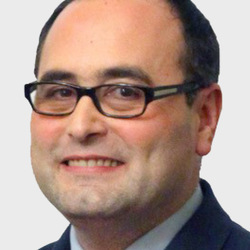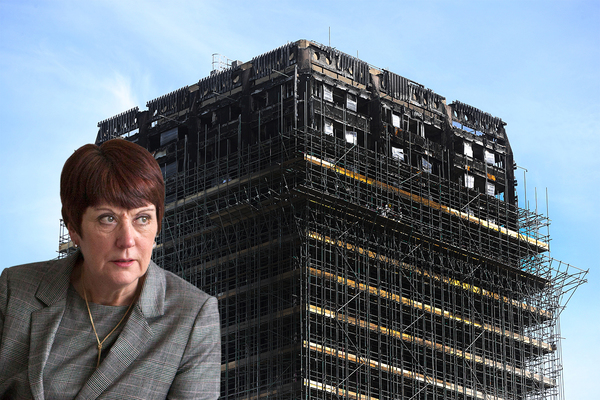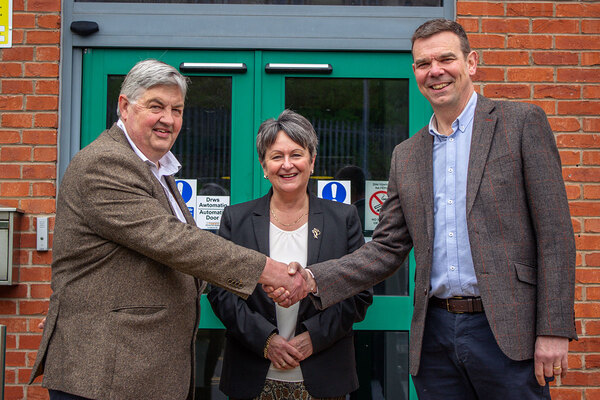You are viewing 1 of your 1 free articles

Time for the government to tackle fire risk from unsafe electrical cables
After Grenfell the focus has been on unsafe cladding but regulation of cables is weak and is causing a fire risk, argues manufacturer Maurizio Bragagni
Speaking as an entrepreneur and CEO of cable manufacturer Tratos UK, there are certain economic, social and cultural factors that attract me to the UK as a place to grow my business.
The rule of law, a strong supply of skills, democratic rights and balanced market regulation all make this nation an appealing place to invest.
But for me, operating at the heart of the cable industry, what matters most is the UK’s rich history of manufacturing quality products.
This is a history that I have a personal commitment to championing in a modern 21st century world – ensuring that standards remain high so products are safe.
However, in a globalised market – with standards differing from country to country – increased competition can drive down price and standards can slip, all at the expense of public safety.
The evidence across the cable market reinforces this. According to the Local Authority Building Control, more than 27% of all electrical fires are attributable to faulty wire and cables.
A related concern is that current regulation is not being sufficiently well enforced. For example, in October 2017 the BBC published evidence from an investigation it carried out which exposed the fact that a now-defunct Turkish cable manufacturer, Atlas Kablo, sold 11 million metres of substandard cable to the UK.
“Even where cable regulation is properly enforced, the standards are weak.”
The Health and Safety Executive, which labours under severe resource restrictions, decided against a compulsory recall of all 11 million metres of that cable.
Consequently, so far only seven million metres have actually been recovered, the BBC reported, posing a real fire safety threat in cases where that cable is still being used.
Even where cable regulation is properly enforced, the standards are weak.
The Ministry of Housing, Communities and Local Government is responsible for stipulating which class of cables should be used in buildings but they have yet to decide this – and consequently, by default, cables in the UK only have to achieve a classification of Euroclass E which requires minimum standards for reacting to fire.
This means that flames can spread through a cable covering three to four metres in just over seven minutes, and aren’t required to be tested by notified bodies.
So, following the Grenfell Tower tragedy, a disaster which stunned the nation with a shocking failure in building safety, I decided it was time to take action and to campaign for a level playing field in the cable market to ensure standards are strengthened to improve fire safety.
“We are extremely concerned that the Hackitt Review made no mention of the regulation of cables and fire safety.”
The Safer Structures Campaign – a campaign seeking to raise cable standards across the UK – was then born.
The campaign brings together those supporting strengthened cable standards and better fire safety from across the industry. And wants to work with the UK Government to introduce a higher minimum standard of cable classification, equivalent to Euroclass Cca, to ensure a limited fire growth rate from cables in an emergency, giving people more time to exit buildings and ultimately helping to increase public safety.
Dame Judith Hackitt’s independent review of building regulations and fire safety is an important step forward, and we welcome its overarching recommendation.
However we are extremely concerned that it made no mention of the regulation of cables and fire safety, despite evidence that existing regulation is weak.
So now all eyes turn to Kit Malthouse, the new housing minister who is responsible for building safety – including the government’s response to Dame Judith – and he should be bold and brave when it comes to introducing new regulations.
The UK has the opportunity to prove itself as a leader in building standards and fire safety on a world stage, introducing a higher minimum standard of cables would be a positive start and a quick domestic policy win for the government. As an immediate first step the government should consult with industry on the matter – the time for change is now, public safety cannot wait.
Maurizio Bragagni, chair, Safer Structures Campaign, and CEO, Tratos UK
More on the Hackitt Review
The Hackitt Review: key recommendations at-a-glance Inside Housing breaks down the key areas of the final report from Dame Judith Hackitt’s review of building regulations
Brokenshire: government will consult on banning combustible cladding The housing secretary announces a consultation despite the Hackitt Report findings
Dame Judith Hackitt: the interview Dame Judith Hackitt spoke to Inside Housing shortly after releasing her much-anticipated review of building regulations
Final Hackitt report calls for new regulatory body but does not ban combustibles Dame Judith Hackitt has called for a regulatory body to be set up to oversee the safety of buildings, but has stopped short of a prescriptive approach or the banning of dangerous cladding.
Grenfell survivors ‘saddened and disappointed’ by Hackitt report Reaction to Hackitt’s findings decision to ignore calls for a ban on combustible cladding
Never Again campaign
In the days following the Grenfell Tower fire on 14 June 2017, Inside Housing launched the Never Again campaign to call for immediate action to implement the learning from the Lakanal House fire, and a commitment to act – without delay – on learning from the Grenfell Tower tragedy as it becomes available.
One year on, we have extended the campaign asks in the light of information that has emerged since.
Here are our updated asks:
GOVERNMENT
- Act on the recommendations from Dame Judith Hackitt’s review of building regulations to tower blocks of 18m and higher. Commit to producing a timetable for implementation by autumn 2018, setting out how recommendations that don’t require legislative change can be taken forward without delay
- Follow through on commitments to fully ban combustible materials on high-rise buildings
- Unequivocally ban desktop studies
- Review recommendations and advice given to ministers after the Lakanal House fire and implement necessary changes
- Publish details of all tower blocks with dangerous cladding, insulation and/or external panels and commit to a timeline for remedial works. Provide necessary guidance to landlords to ensure that removal work can begin on all affected private and social residential blocks by the end of 2018. Complete quarterly follow-up checks to ensure that remedial work is completed to the required standard. Checks should not cease until all work is completed.
- Stand by the prime minister’s commitment to fully fund the removal of dangerous cladding
- Fund the retrofitting of sprinkler systems in all tower blocks across the UK (except where there are specific structural reasons not to do so)
- Explore options for requiring remedial works on affected private sector residential tower blocks
LOCAL GOVERNMENT
- Take immediate action to identify privately owned residential tower blocks so that cladding and external panels can be checked
LANDLORDS
- Publish details of the combinations of insulations and cladding materials for all high rise blocks
- Commit to ensuring that removal work begins on all blocks with dangerous materials by the end of 2018 upon receipt of guidance from government
- Publish current fire risk assessments for all high rise blocks (the Information Commissioner has required councils to publish and recommended that housing associations should do the same). Work with peers to share learning from assessments and improve and clarify the risk assessment model.
- Commit to renewing assessments annually and after major repair or cladding work is carried out. Ensure assessments consider the external features of blocks. Always use an appropriate, qualified expert to conduct assessments.
- Review and update evacuation policies and ‘stay put’ advice in the light of risk assessments, and communicate clearly to residents
- Adopt Dame Judith Hackitt’s recommended approach for listening to and addressing tenants’ concerns, with immediate effect
CURRENT SIGNATORIES:
- Chartered Institute of Housing
- G15
- National Federation of ALMOs
- National Housing Federation
- Placeshapers
The Paper Trail: The Failure of Building Regulations
Read our in-depth investigation into how building regulations have changed over time and how this may have contributed to the Grenfell Tower fire:










